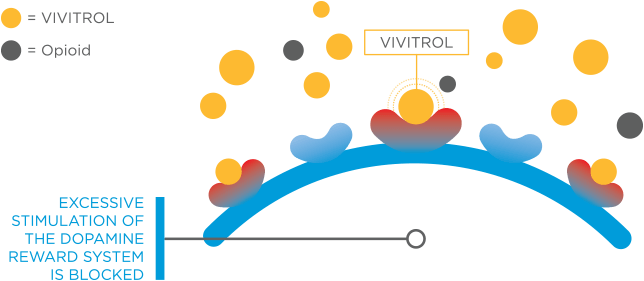
19 Nov Is Vivitrol as effective as Suboxone?
Opiate abuse and addiction is the fastest-growing substance use problem in the United States, and treatment for opiate addiction requires long-term management. Behavioral interventions alone have poor outcomes, with upwards of 80% of patients returning to drug use. acording to the National Institute of Health (NIH) success rates are increased drastically with long-term monitoring programs (case Management) and medication-assisted treatment (MAT). The most common medication utilized is suboxone however many providers are now utilizing Vivitrol (Natrexone) in a similar manner. The question that many Addicts and their loved ones now ask is vivitrol as effective as Suboxone? and Which one will be more beneficial for me and my family?
What is Medically Assisted Treatment (MAT)?
Medication-assisted treatment is a treatment for addiction that includes the use of medication along with counseling, Case Managment and Peer-Support recovery programs. According to the Substance Abuse and Mental Health Services Administration (SAMHSA) a treatment that includes medication is often the best choice for opioid addiction. Two such medications used for opioid addiction are Vivitrol (naltrexone) and Suboxone. Vivitrol and Suboxone work in similar ways: they block the euphoric effects of opioids which deters drug use.
What is Vivitrol (Natrexone)?
As you can see in the illustration above, Vivitrol blocks opioid’s effect, preventing their effects in the brain. Even if a user takes a drug such as Heroin or Fentanyl the user is unable to get a high as Vivitrol blocks the drug. Normally, the opioid molecule would interact with these receptors in the brain, creating a euphoric effect that created the desire to continue using the drug. This medications ability to prevent the desired effect of illicit opioids ensures that the patient seeks other means of coping such as therapy, case management and peer support recovery meetings (AA, NA, SMART).
What is Suboxone?
Suboxone is a form of medically assisted treatment that is designed to assist in the treatment of opiod use disorder. it includes two ingredients; Buprenorphine and the medication Naloxone. Buprenorphine is an Opioid; However, since it’s a partial opioid agonist, it prevents other opioids from binding to receptors in the brain. In other words, when combined with Naloxone it prevents heroin, oxycodone or fentanyl from giving their desired “high”. Because of this effect suboxone provides a way for patients to taper themselves off of Opioids safely while minimizing withdrawal. Buprenorphine is less likely to cause the euphoric and sedating effects of other opioids. The medication will suppress withdrawal symptoms and satisfy basic opioid cravings in someone with addiction. This effect is what leads many struggling with Opiate addiction to turn to it as a relief from the infamous withdrawal that cause so many addicts to relapse in early recovery.
Vivitrol vs. Suboxone
So what is the difference between Vivitrol (naltrexone) and Suboxone? Suboxone and Vivitrol are both FDA approved medications used for the long-term treatment of opiate addiction.
Suboxone is given as sublingual strips (thin films put into your mouth similar to a Listerine strip). These films contain Buprenorphine which is an opioid in and of itself and produces a mild euphoric effect. However, that effect plateaus at higher doses and thus cannot be abused in the same way. This can create a dependency on Suboxone when using it as a maintenance drug rather than a short transition. Like heroin, quicklu stopping the use of Suboxone causes physical symptoms of withdrawals, causing the user to stay on Suboxone rather than returning to another opiate.
Vivitrol was first developed in pill form, however, it can now be administered as a monthly shot making it impossible to come off of the medication on a whim. A recent study sponsored by the NIDA, the National Institute on Drug Abuse, found that a monthly shot of Vivitrol is as effective as a daily dose of Suboxone. Unlike Suboxone, Vivitrol has no opiate activity or euphoria. It poses minimal risk of abuse or re-sale into the black market. Vivitrol has neither has a positive reinforcement (acting on the same opiate receptors such as with Suboxone) nor a withdrawal effect. Unlike Suboxone, a patient doesn’t become chemically dependent on Vivitrol.
What is the difference between a partial agonist and an antagonist?
Suboxone and Vivitrol compete with opioids at receptor sites, each having a high affinity for the receptors opioids interact with. Suboxone is classified as a partial agonist. This means that it acts as an opiate molecule, attaching to receptor sites with high affinity. However, as an agonist, it still creates a partial opiate effect at binding to the site. This partial effect creates the same, albeit mild, euphoric effect associated with opiate use. Because Suboxone has this partial euphoric effect, it also contains naloxone, which is used in Narcan shots for opiate overdose. This is a deterrent for any misuse of the product. Unlike Suboxone, Vivitrol is an antagonist, not an agonist, and blocks opiate molecules from binding to receptor sites. This means that it works without creating the euphoric opiate effect in and of itself.
What are your thoughts on medically assisted treatment for opiate addiction?
If you have any questions or want to learn more about long-term monitoring programs and the potential of medically assisted treatment for your loved one, call 866-888-4911 or contact us online.




Sorry, the comment form is closed at this time.